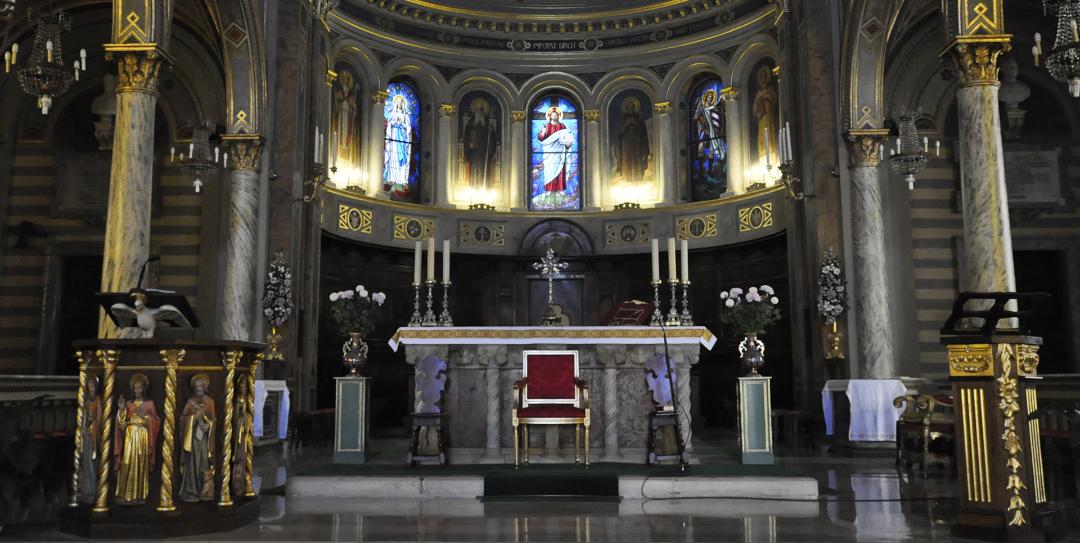The ceiling is made up of cross vaults alternating with arches and finishes in the big raised semicircular apse, overlooking the 19th century crypt.
The main altar, dating back to the end of the 14th century and reconstructed in 1965, is located in the apse and presents bas reliefs depicting stories of St. Benedict, executed by Guglielmo Ciani.
The walls of the basilica are decorated with paintings executed by Ulisse Ribustini dating from between 1907 and 1924.
The basilica, as it appears today, was built around the half of the 13th century, but in the ancient times it raised outside the current walls of Gualdo Tadino, in a place today called indeed “of Old St. Benedict”.
It was an important Benedictine abbey founded in 1006 by the count Offredo on the ruins of an ancient hermitage.
The count became a monk and then the abbey started to grow in importance, by becoming one of the most influential ones in the area. Nevertheless, since it was located outside the town, it was often prey of raids; therefore, in 1215 monks asked Pope Innocent III if they could relocate to a more defensible place.
As we can read in the wall plaque on the left side of the church, in 1256 the abbey was transferred inside Gualdo Tadino. It was fundamentally rebuilt, with the help of Lombard workers, in the late-Romanesque and Gothic style as we can see that today.
Throughout the intervening centuries, it has undergone other restorations, especially between the 18th and the 19th centuries: the construction of the bell tower in neo-Romanesque style and the internal reconstruction of the church in 1875, executed according the project of Virginio Vespignani.
In 1915 the church of St. Benedict was elevated to the status of cathedral by Pope Benedict XV and, as it can be seen, has recently had further restoration.






























